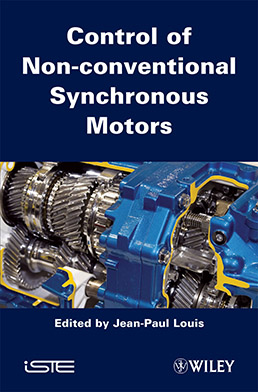
Classical synchronous motors are the most effective device to drive industrial production systems and robots with precision and rapidity. However, numerous applications require efficient controls in non-conventional situations.
Firstly, this is the case with synchronous motors supplied by thyristor line-commutated inverters, or with synchronous motors with faults on one or several phases.
Secondly, many drive systems use non-conventional motors such as polyphase (more than three phases) synchronous motors, synchronous motors with double excitation, permanent magnet linear synchronous motors, synchronous and switched reluctance motors, stepping motors and piezoelectric motors.
This book presents efficient controls to improve the use of these non-conventional motors.
1. Self-controlled Synchronous Motor: Principles of Function and Simplified Control Model, Francis Labrique and François Baudart.
2. Self-controlled Synchronous Motor: Dynamic Model Including the Behavior of Damper Windings and Commutation Overlap, Ernest Matagne.
3. Synchronous Machines in Degraded Mode, Damien Flieller, Ngac Ky Nguyen, Hervé Schwab and Guy Sturtzer.
4. Control of the Double-star Synchronous Machine Supplied by PWM Inverters, Mohamed Fouad Benkhoris.
5. Vectorial Modeling and Control of Multiphase Machines with Non-salient Poles Supplied by an Inverter, Xavier Kestelyn and Éric Semail.
6. Hybrid Excitation Synchronous Machines, Nicolas Patin and Lionel Vido.
7. Advanced Control of the Linear Synchronous Motor, Ghislain Remy and Pierre-Jean Barre.
8. Variable Reluctance Machines: Modeling and Control, Mickael Hilairet, Thierry Lubin and Abdelmounaïm Tounzi.
9. Control of the Stepping Motor, Bruno Robert and Moez Feki .
10. Control of Piezoelectric Actuators, Frédéric Giraud and Betty Lemaire-Semail.
Jean-Paul Louis is currently Emeritus Professor at École normale supérieure de Cachan (ENS Cachan, UniverSud Paris, France). He is Associate Editor of the European Journal of Electrical Engineering (Hermes). His teaching and research concern modeling and control of electrical systems.